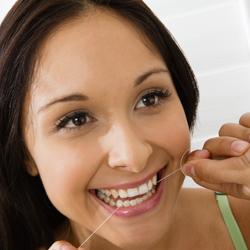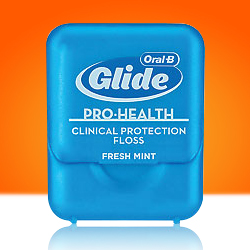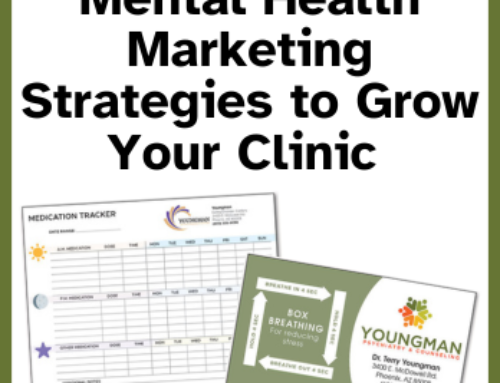
According to a survey by the American Academy of Periodontology (AAP), more than a quarter of US adults are lying to their dentists about flossing. And that’s just the ones who admit it. This statistic has vital implications for the prevalence of gum disease in the nation. So, how can you help American adults understand the health risks they face when they don’t protect their gums by flossing? How can you increase the likelihood that they will floss?
 Don’t Guilt Patients into Flossing–Educate Them
Don’t Guilt Patients into Flossing–Educate Them
From inconvenience to pain, there are many reasons patients avoid flossing and feel guilty about it later. You can help shift the focus from guilt to health by informing them about the overall benefits of maintaining healthy gums – i.e. a lower risk for a number of chronic diseases like heart disease, Alzheimer’s and even cancer, as well as a longer life span. Also, by leveraging the textured grip, pleasant flavor, and easy-glide qualities of floss like Oral-B® Glide® PRO-HEALTH® Clinical Protection Floss, you can promote more comfortable flossing.
Consider Flossing Alternatives
Fortunately, there are supplies other than conventional floss which allow patients to protect their gums while reducing the messy, finger-binding, gum-irritating effects that many experience with flossing. For example, flossers are a convenient and effective option. They require just one hand, reduce the risk of infection from unclean hands in the mouth, and are easier for patients—especially kids and the elderly—to maneuver (versus conventional floss). Give reluctant flossers supplies like GUM® Eez-Thru® Flossers as an alternative to the floss you put in their supply bags.
Water Flossers are another great alternative. In fact, the Waterpik® Complete Care was proven to remove up to 99.9% of plaque from treated areas, and comes conveniently packaged with a quality electric toothbrush. Consider selling these at your office, so patients will buy directly from you and not miss them in the aisles of their local supermarket.
By equipping your patients with the education and dental supplies they need to protect their gums, you can make a significant impact on their health. From reduced plaque to a longer life, the right information and the right flossing options go a long way. How are you helping your adult patients floss effectively? What tips are you sharing to promote honest, compliant flossing habits?







